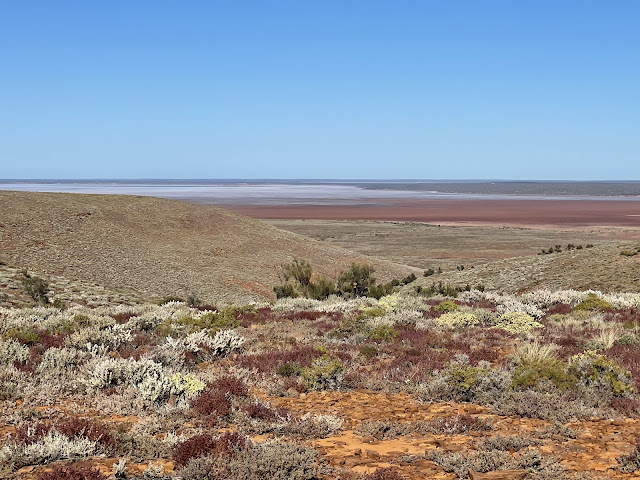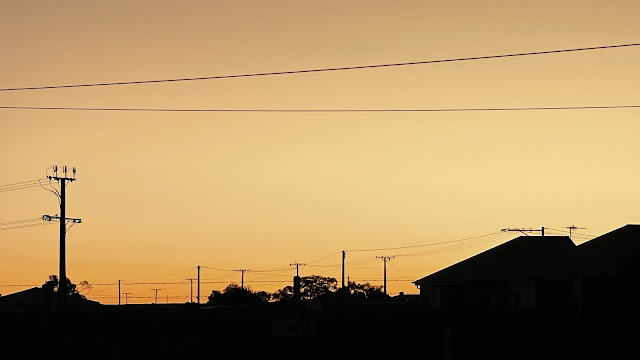Today was mainly a day of driving.
I only saw one old stone ruin, south of Roxby Downs.
We left Roxby Downs and called in at the little village of Woomera. This is the support town for the RAAF Woomera Test Range.
Reading an information board I learned that Woomera is the world’s largest Test and Evaluation Range, with a prohibited area covering approximately 127,000 square kilometres, or roughly the size of England. It is not only the ground that is prohibited, but all the airspace “from ground to outer-space” restricted as well.
There are about 200 permanent residents of Woomera with between 5,000 and 6,000 transiting annually. They carry out between 60 to 100 tests per year.
The Woomera Rocket Range was established under the Anglo-Australian Joint Project after World War 2. They test ground-based, air and space defence systems, as well as explosive ordnance and hazardous material testing.
I think it is mostly infamous for the testing of atomic bombs in the 1950s and the subsequent health issues of the personnel and aboriginal inhabitants of the area. There was no mention of any of that testing on anything I read, but we didn’t get to the museum, as it was closed. There may have been that side of the history mentioned there.
We didn’t have a lot of time to spend in the town, so just visited the little park at the entrance to the town which had on display a Long Tom Rocket. It was the first Australian sounding rocket. It was first launched in 1957, being a two-stage rocket developed to test the range’s instrumentation for later projects.
In town there is a Rocket Park with quite a few examples of what was developed and deployed at Woomera.
I thought that drones were a new thing in warfare. It doesn’t seem that is the case. This is GAF Jindivik. It is a radio controlled jet propelled target drone. The first flight was in 1952, with the last being delivered in 1986. There were 517 built and they were in service until 1998.
The Black Arrow is a rocket designed to launch satellites into orbit at a height of 500kms. Four were launched from Woomera between 1969 and 1971.
This wreckage was retrieved from the Simpson Desert by a team of locals in 1990. It was used to carry Australia’s first satellite (WRESAT) into orbit in 1967. Australia was the fourth in the world, after USSR, France, and USA, to launch a satellite.
There were also missiles and bombs. This is an Ikara anti submarine missile.
Mick was disappointed that there wasn’t a rocket climbing frame, like there used to be in all kiddies parks when we were growing up.
Back on the road north, we saw a sign to a photographic opportunity so called in. Looking at the map, it is another section of Island Lagoon, which we saw yesterday. It is huge.
I loved this old fence line heading off into the distance.
Our next stop was at Glendambo Roadhouse. This little village was set up after the Stuart Highway was realigned in the early 1980s.
It gets its water from a natural aquifer and is only 15 metres below the surface.
The temperature can vary from a scorching 50 degrees C to minus 5 degrees C. The population is about 30 people and about 30,000 sheep.
The highway we are travelling on is the Stuart Highway, named after the explorer Joh McDouall Stuart, who travelled this route. The road was just a series of rough tracks to the stations initially. The first car to travel from Adelaide to Darwin was in 1908, after an aborted attempt the previous year. The road we are travelling on was completed in 1987. The new road route is about 150kms shorter than before.
I was a tad excited to finally be able to get a photo of a Sturts Desert Pea in the wild. We had seen one at the botanic gardens and then another driving from Roxby Downs, but not where you could get a photo. Aren’t they stunning.Our destination for the day. The opal mining town of Coober Pedy.
Another lovely sunset.
We will be here for three nights, so look forward to exploring tomorrow.
The highlight of the day for me was the rocket park and seeing the Sturts Desert Pea up close. For Mick it was driving through the wide ope countryside and a brief chat over the UHF radio with some fellow travellers.



















another super post...going right along with ya! flora and fauna always amazing...
ReplyDeleteLooks like quite a long drive, and of course you found plenty to see along the way. Those Scarlett pea flowers are very striking, little pops of colour.
ReplyDeleteWonderful post again Janice, I am enjoying your travels. The Sturts Desert Pea is stunning.
ReplyDelete